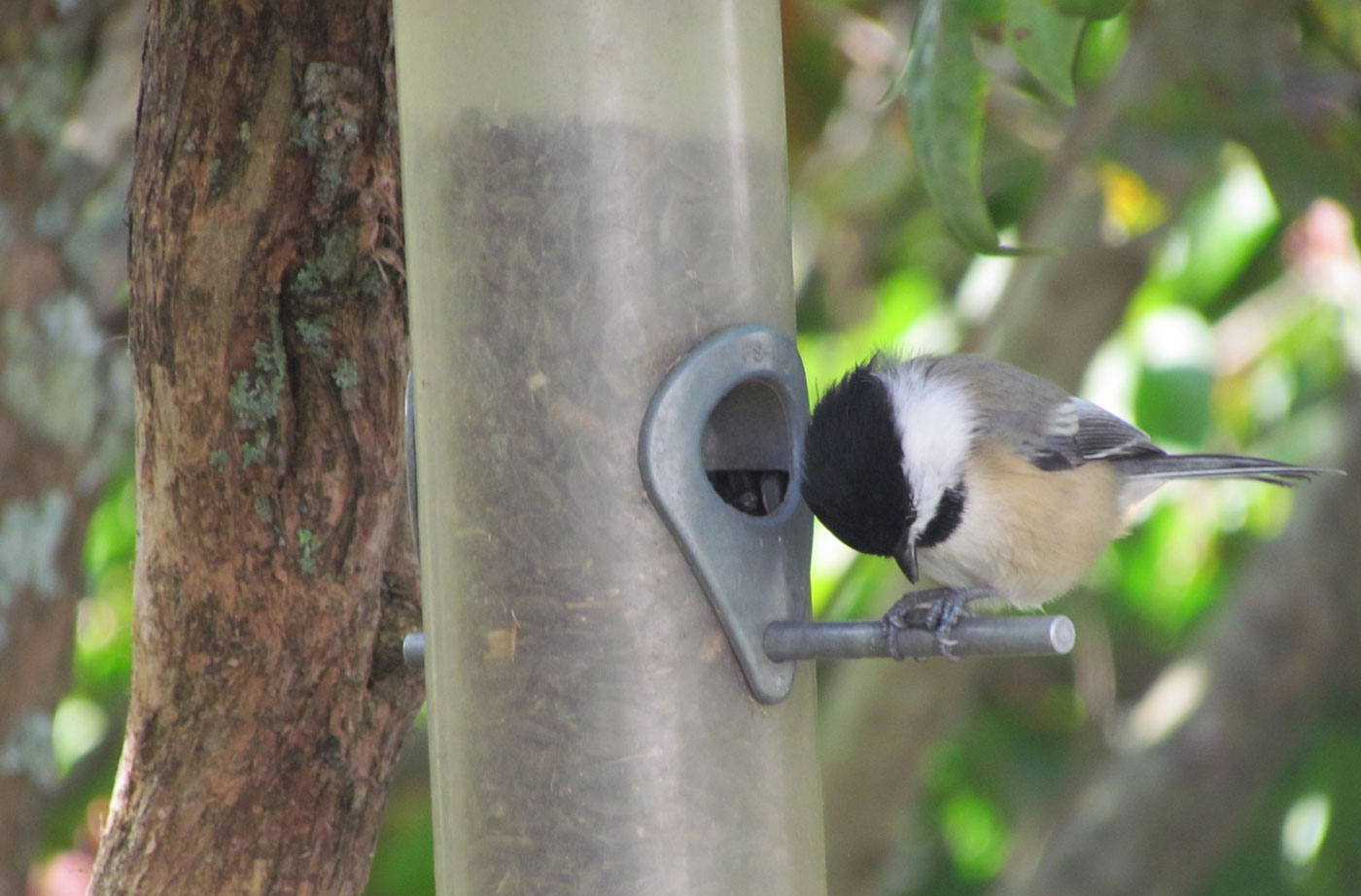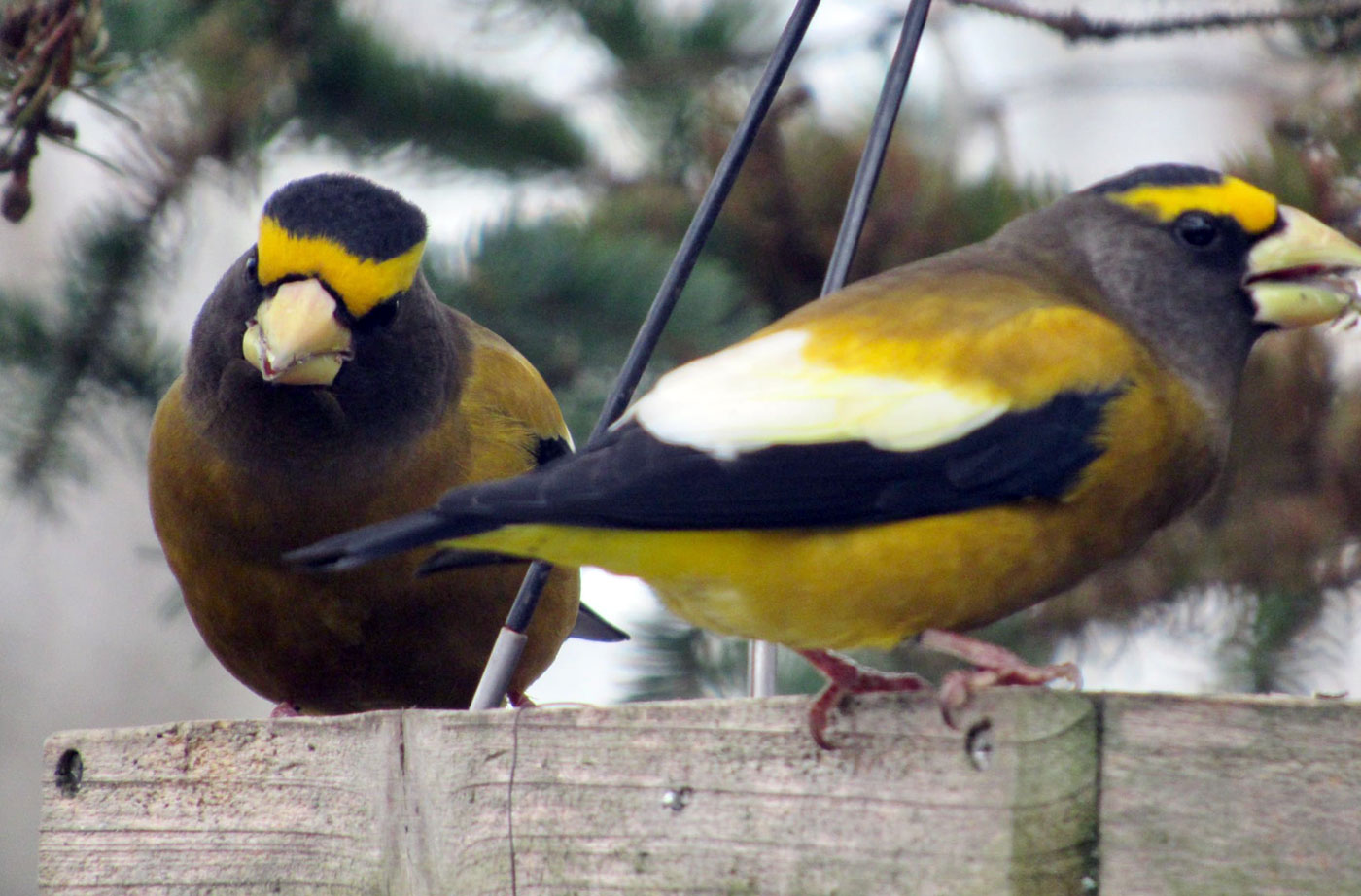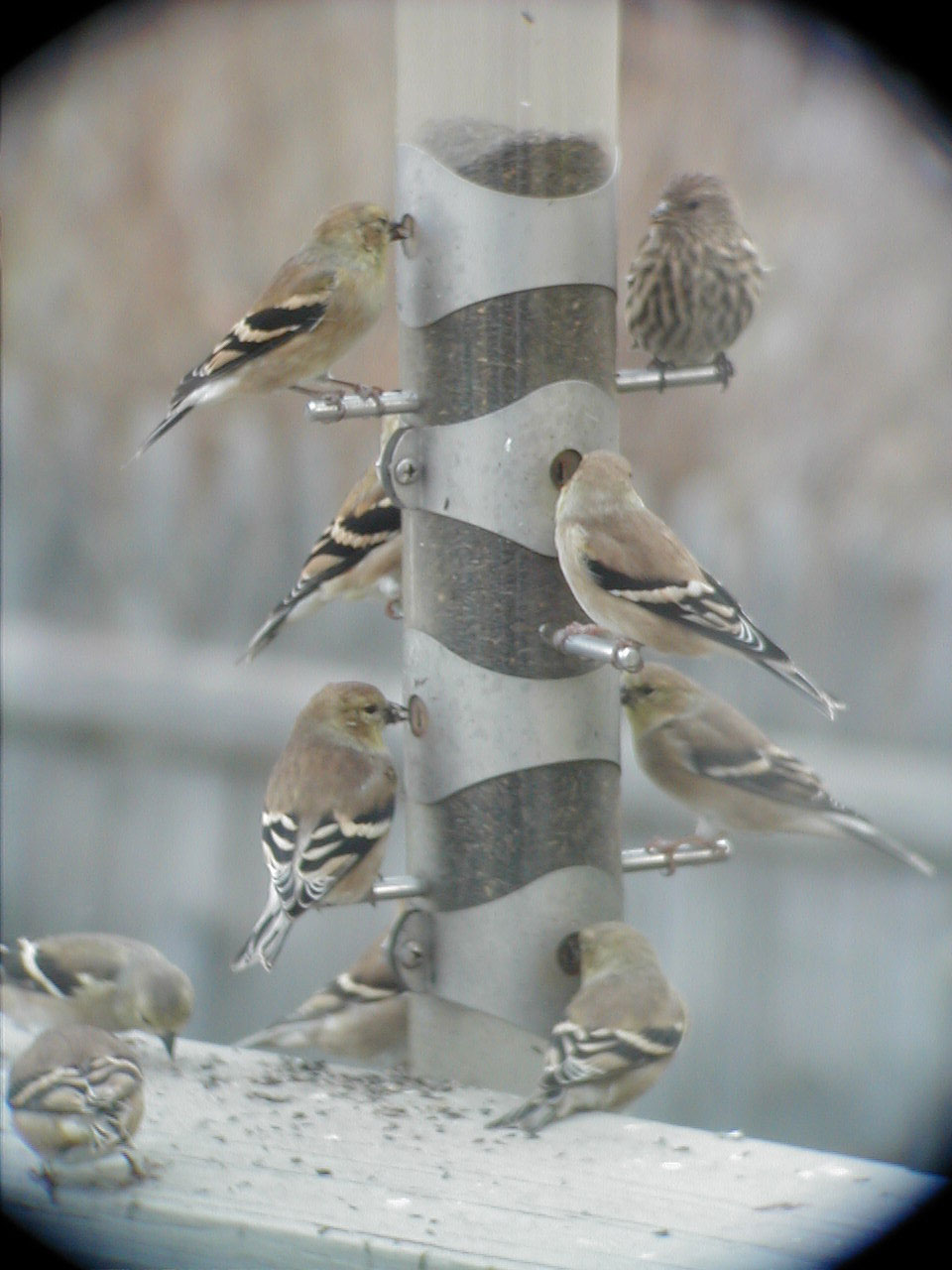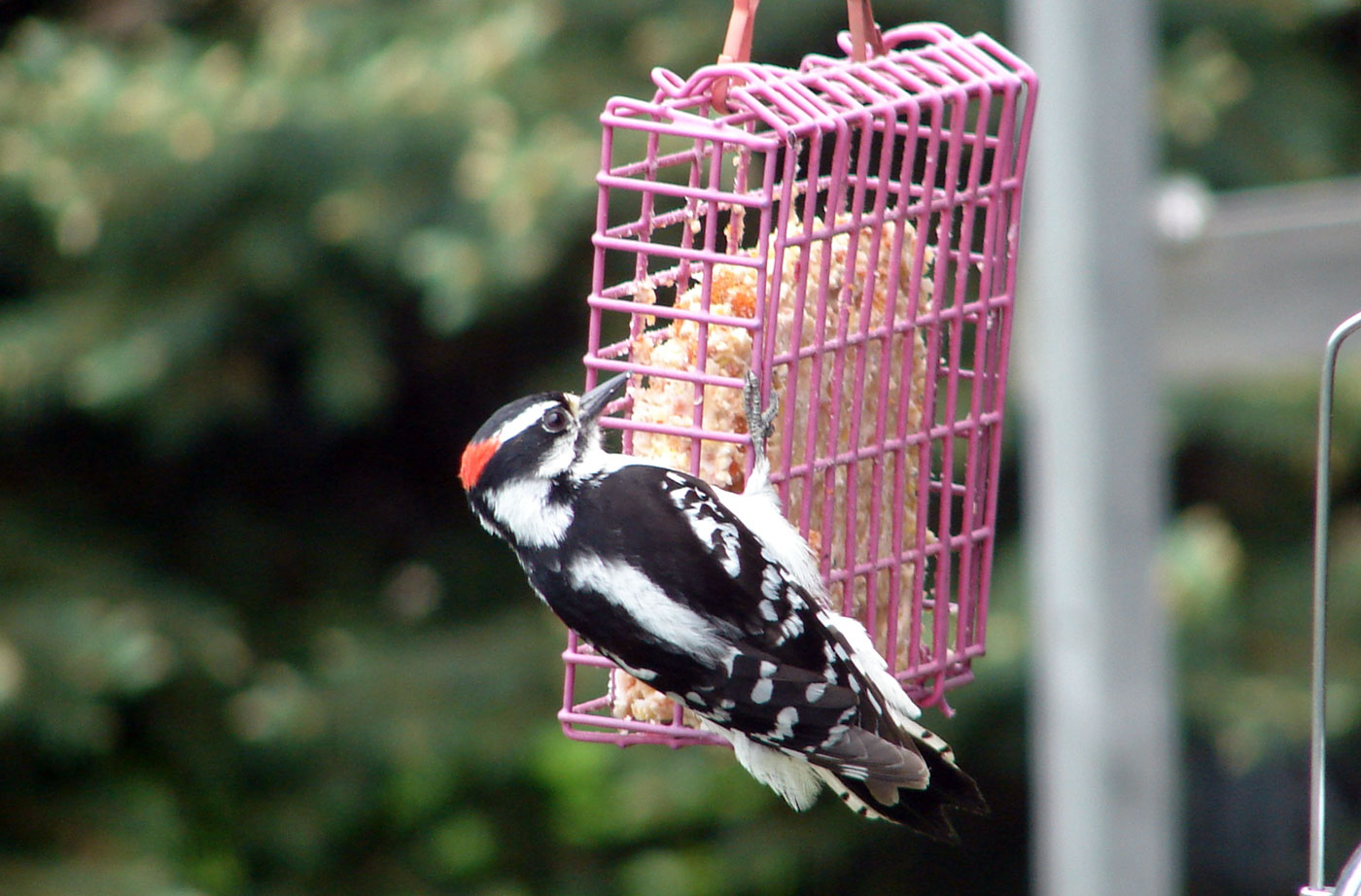February has beenall about birds, at least for us bird enthusiasts. For one thing, the Great Backyard Bird Count (GBBC) took February 12 through February 15. We have fond memories of our years at the Cornell Lab of Ornithology, one of our best being the brainstorming we did with National Audubon as we all tried to think of an event that would engage as many people in birdwatching as possible over a given period of time. Decades later, the GBBC is still collecting data, churning out maps, and getting people excited about watching wild birds. We’ve updated this blog so that rather than invite you to participate, now that’s it’s already taken place you can view results birdcount.org. Check it out and see what got reported by bird enthusiasts across Maine.
February is also National Bird-feeding Month, a time to bring awareness to the needs of wild birds. Although they get the majority of their food from natural sources, providing a bird feeder can help get birds get through particularly tough times—and those tough times continue into March and some years April! Bird-feeding is also a great way to study bird plumage, behavior, and get others—including kids—hooked on birds and nature, which enhances their chances of becoming advocates later in life. During these days of COVID, birding is a great, relaxing family activity. Birding for a cause makes it all the more worthwhile.
With all of this in mind, we share with you here some bird-feeding tips. First, be sure you have an easy-to-use birding guide. We wrote ours, Maine’s Favorite Birds (available at local bookstores and at www.amazon.com/Maines-Favorite-Birds-Jeffrey-Wells/dp/0884483363).
Now, when it comes to bird feeding, the kind of feeder you use and what you put in it will determine the kinds of birds you will see.

Black-capped Chickadee at a tube feeder. (Photo by Jeff & Allison Wells)
This is a tube feeder. To attract the greatest variety of species, this is your feeder. Be sure to fill it with black oil sunflower seeds. Black-capped Chickadee, White-breasted Nuthatch, Tufted Titmouse, House Finch, Purple Finch, American Goldfinch – just about everybody loves a tube feeder, if it’s filled with the right seed. If you fill this feeder with millet or mixed seed, it will mostly just sit there, swinging in the chilly winter wind, and the seed will rot—you might say your money will be down the “tubes.” Many birds do like millet and mixed seed, but it’s best spread on the ground or in a platform feeder, which looks like this:

Evening Grosbeaks at a platform feeder (Photo by Julie Harris)
Our favorite memories associated with a platform feeder are from years ago, when a flock of more than a dozen Evening Grosbeaks descended upon the one at the Childs’ household. They hung around for days, devouring seed at such a rate that we had to replenish it at least once each day. Evening Grosbeaks have declined drastically in recent years, but many people here in Maine and beyond have been seeing them, as part of this winter’s “finch invasion.” More expected species to look for at a platform feeder (and underneath it, picking up the spilled seed or whatever you choose to sprinkle there) include Northern Cardinal, Blue Jay, Dark-eyed Junco, American Tree Sparrow, as well as overwintering Song Sparrows, to name a few.
Here’s a thistle feeder:

American Goldfinches on thistle feeder. (Photo by Jeff & Allison Wells)
Thistle feeders hold – you guessed it – thistle, which is also known by a variety of other names. Finches will flock to it. In addition to the House and Purple Finches as well as goldfinches, which also love a tube feeder, a thistle seed feeder will attract Common Redpolls and Pine Siskins that may be in the area.

Downy Woodpeckert at a suet feeder (Photo by Beth Comeau)
This is a suet feeder (unless you choose to use an onion bag or old lobster bait bag instead, which work fine). Drop in a chunk of suet (beef fat, available at most grocery stores) or use suet cakes. Caution: there are lots of “gourmet” suet cakes out there, some of which are pricy. Your basic chunk of cheap-o suet will do the job just fine. Woodpeckers love the stuff, and so do nuthatches, chickadees, and jays.
If you decide you want to start feeding birds, be sure to keep your bird feeders clean. Wash them regularly with soapy water and be sure they are completely dry before refilling them with seed or the seed will mold and could pose a threat to birds.
In addition to food, water is a good provision to attract birds to your yard. During a Maine winter, unfrozen water can be hard for birds to easily find, so a winter water fountain could become a popular visitation station for birds.
A brush pile at the edge of your yard can provide shelter for birds. Rather than putting storm-blown limbs at the curb for the garbage truck, pile them up for the birds.
And when it comes to bird feeding, think ahead to winter when you’re planning your spring and summer gardens. Native plants and flowers can provide fruits and seeds for birds long after the beautiful flowers have brightened your yard (learn more about native plant gardening in another Nature of Maine blog post). Resist the temptation to trim back vegetation that could be “fruitful” for birds – what may look not so pretty to you may be an Insta perfect meal for birds!
—Allison & Jeff Wells










Leave a Reply